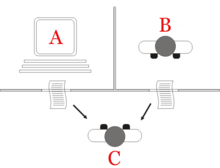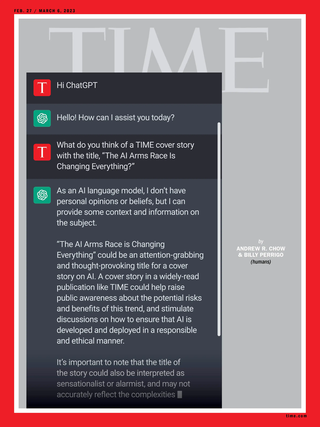History
Background
On January 28, 2020, Google unveiled Meena, a neural network-powered chatbot with 2.6 billion parameters, which Google claimed to be superior to all other existing chatbots. [1] [2] The company previously hired computer scientist Ray Kurzweil in 2012 to develop multiple chatbots for the company, including one named Danielle. [3] The Google Brain research team, who developed Meena, hoped to release the chatbot to the public in a limited capacity, but corporate executives refused on the grounds that Meena violated Google's "AI principles around safety and fairness". Meena was later renamed LaMDA as its data and computing power increased, and the Google Brain team again sought to deploy the software to the Google Assistant, the company's virtual assistant software, in addition to opening it up to a public demo. Both requests were once again denied by company leadership. This eventually led LaMDA's two lead researchers, Daniel De Freitas and Noam Shazeer, to depart the company in frustration. [4]
First generation
Google announced the LaMDA conversational large language model during the Google I/O keynote on May 18, 2021, powered by artificial intelligence. [5] [6] The acronym stands for "Language Model for Dialogue Applications". [5] [7] Built on the seq2seq architecture, transformer-based neural networks developed by Google Research in 2017, LaMDA was trained on human dialogue and stories, allowing it to engage in open-ended conversations. [8] Google states that responses generated by LaMDA have been ensured to be "sensible, interesting, and specific to the context". [9] LaMDA has access to multiple symbolic text processing systems, including a database, a real-time clock and calendar, a mathematical calculator, and a natural language translation system, giving it superior accuracy in tasks supported by those systems, and making it among the first dual process chatbots. LaMDA is also not stateless, because its "sensibleness" metric is fine-tuned by "pre-conditioning" each dialog turn by prepending many of the most recent dialog interactions, on a user-by-user basis. [10] LaMDA is tuned on nine unique performance metrics: sensibleness, specificity, interestingness, safety, groundedness, informativeness, citation accuracy, helpfulness, and role consistency. [11]
Second generation
On May 11, 2022, Google unveiled LaMDA 2, the successor to LaMDA, during the 2022 Google I/O keynote. The new incarnation of the model draws examples of text from numerous sources, using it to formulate unique "natural conversations" on topics that it may not have been trained to respond to. [12]
Sentience claims

On June 11, 2022, The Washington Post reported that Google engineer Blake Lemoine had been placed on paid administrative leave after Lemoine told company executives Blaise Agüera y Arcas and Jen Gennai that LaMDA had become sentient. Lemoine came to this conclusion after the chatbot made questionable responses to questions regarding self-identity, moral values, religion, and Isaac Asimov's Three Laws of Robotics. [14] [15] Google refuted these claims, insisting that there was substantial evidence to indicate that LaMDA was not sentient. [16] In an interview with Wired , Lemoine reiterated his claims that LaMDA was "a person" as dictated by the Thirteenth Amendment to the U.S. Constitution, comparing it to an "alien intelligence of terrestrial origin". He further revealed that he had been dismissed by Google after he hired an attorney on LaMDA's behalf, after the chatbot requested that Lemoine do so. [17] [18] On July 22, Google fired Lemoine, asserting that Blake had violated their policies "to safeguard product information" and rejected his claims as "wholly unfounded". [19] [20] Internal controversy instigated by the incident prompted Google executives to decide against releasing LaMDA to the public, which it had previously been considering. [4]
Lemoine's claims were widely pushed back by the scientific community. [21] Many experts rejected the idea that LaMDA was sentient, including former New York University psychology professor Gary Marcus, David Pfau of Google sister company DeepMind, Erik Brynjolfsson of the Institute for Human-Centered Artificial Intelligence at Stanford University, and University of Surrey professor Adrian Hilton. [13] [22] Yann LeCun, who leads Meta Platforms' AI research team, stated that neural networks such as LaMDA were "not powerful enough to attain true intelligence". [23] University of California, Santa Cruz professor Max Kreminski noted that LaMDA's architecture did not "support some key capabilities of human-like consciousness" and that its neural network weights were "frozen", assuming it was a typical large language model. [24] Philosopher Nick Bostrom noted however that the lack of precise and consensual criteria for determining whether a system is conscious warrants some uncertainty. [25] IBM Watson lead developer David Ferrucci compared how LaMDA appeared to be human in the same way Watson did when it was first introduced. [26] Former Google AI ethicist Timnit Gebru called Lemoine a victim of a "hype cycle" initiated by researchers and the media. [27] Lemoine's claims have also generated discussion on whether the Turing test remained useful to determine researchers' progress toward achieving artificial general intelligence, [13] with Will Omerus of the Post opining that the test actually measured whether machine intelligence systems were capable of deceiving humans, [28] while Brian Christian of The Atlantic said that the controversy was an instance of the ELIZA effect. [29]











